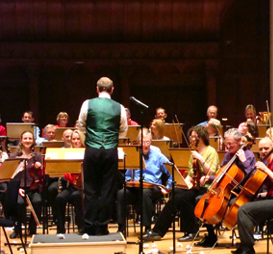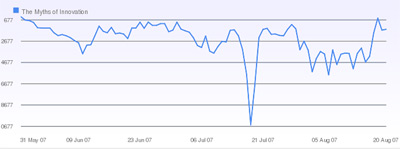We have truly messed up our job titles.
Somehow, somewhere, the job title project manager became lame. I don’t know if it was born this way, or if it happened over time, but it’s a shame. Here’s what I think happened – we’ve confused project tracking with project leading.
If you take any interesting work in architecture, film, software, or any pursuit that involves millions of dollars or dozens of people, there is someone playing an executive role, overseeing decisions, budgets and schedules. They are a leadership force for the project, and are, in essence, a project leader. They might call themselves director, producer, architect, or VP of whatever, but if their authority is tied to a project, they are a Project Leader.
But somehow that job title never caught on. Not in software, not anywhere. Instead, the title project manager is used everywhere with all sorts of meanings. At NASA, the director of the entire space shuttle program is called a project manager. But more often the project manager is the guy with an ambiguous role and even less clear authority.
Many of these people are really Project Trackers. They write reports, make spreadsheets, and report back to people on what just happened. They aren’t expected to lead the entire project, as engineers or business analysts take most of the fun parts of the leadership role anyway. But no one ever gets that job title – it’d be too easy to figure things out.
Microsoft dodged this whole problem, and created new ones, by creating the role of Program Manager. This was a project manager who isn’t granted much leadership authority, but who is allowed to earn it and grow into a true project leader. But soon there were program managers whose sole job was to manage a single dialog box, and the power of the role was gone.
Worse, many places have Product managers, program managers, and project managers all on the same teams, further confusing who does what and why.
The solution: whenever I meet people with a P or an M in the title, I ask the following questions.
- Does your team report to you?
- Whose approval do you need to decide what work gets done?
- Do you create / contribute to / follow requirements?
- Do you create / contribute to / follow specifications?
- Do you create / contribute to / follow schedules?
- Is idea generation and design a major / minor / negligible part of your role?
- How much of your time is spent tracking the project vs. leading it?
- Does your level of involvement, from project inception to completion, change?
- Are you completely / partially / indirectly accountable for the project outcome?
Only then do I understand which dimensions of leadership/management the person is responsible for. I wish it was easier, but I find I’m always asking these questions every time I teach or consult in a different place, no matter what their job title says.
Anyone else have ideas for how to identify which kind of PM you’re dealing with?

 It’s one continuous 90 minute shot.
It’s one continuous 90 minute shot.





 This is in two parts: first, a quick and dirty movie review. Second, a short essay on
This is in two parts: first, a quick and dirty movie review. Second, a short essay on  Boston Philharmonic and the RTO both threw parties on the same night, the RTO party would kick The Boston Philharmonic party’s ass. Why? Because the RTO vibe, as I read it, is free and open. They’re looking to experience more than to be perfect. Their rule set for what music is, and what it means, is way more open than any formalized orchestra could ever be.
Boston Philharmonic and the RTO both threw parties on the same night, the RTO party would kick The Boston Philharmonic party’s ass. Why? Because the RTO vibe, as I read it, is free and open. They’re looking to experience more than to be perfect. Their rule set for what music is, and what it means, is way more open than any formalized orchestra could ever be.

